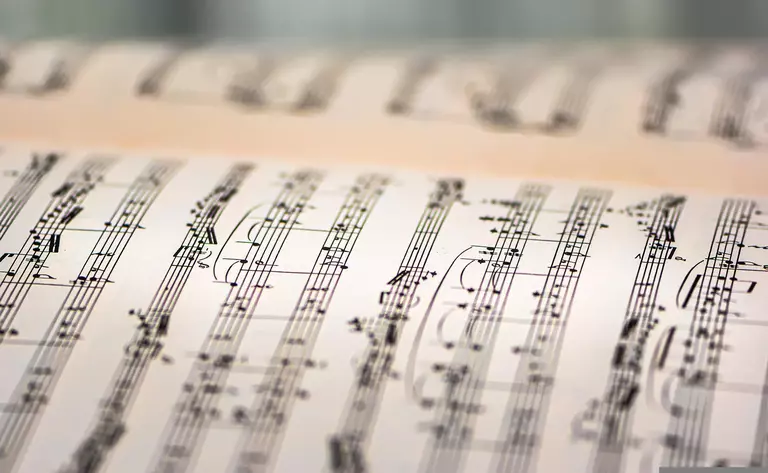11 September 2022
History of the string quartet 2
The string quartet format first appeared in the mid-18th century. The early string quartets of Joseph Haydn consist of five movements and resemble a divertimento or a serenade, but the quartets of his Op. 9 (1769-70) feature a structure that would become the standard for Haydn and other composers. They are made up of four movements: a fast movement, a slow movement, a minuet with a trio, and a fast finale. Because his example helped to codify the structure that emerged from the Baroque suite, Haydn is often referred to as the "father of the string quartet".

Haydn would perform his quartets on social occasions in an impromptu ensemble, which included Mozart. The composition of string quartets flourished in the Classical era: both Mozart and Beethoven wrote famous quartets that stood alongside Haydn's works.
Ludwig van Beethoven's 16 string quartets (1770-1827) are considered some of the most important works in the genre. They are typically divided into early, middle, and late quartets. The last six quartets (Nos. 1-6, Op. 18) are seen as evidence of Beethoven's full mastery of the form, which evolved from the quartets of Joseph Haydn (1732-1809) and Wolfgang Amadeus Mozart (1756-1791). The Razumovsky quartets, composed in 1805-1806 at the request of Count Andreas Razumovsky, are enduringly popular for their emotional sensitivity and dramatic expression
Beethoven's late quartets, which include the last five quartets and the Große Fuge, are his final compositions. These works depart from the Romantic ethos of his middle quartets and are much more complex in terms of harmonic and structural invention. The harmonic and melodic complexity of these works left many who were familiar with Beethoven's early and middle quartets perplexed, with some speculating that Beethoven's increasing deafness in his later years led him to lose his grasp of music.
In all composers, we find either contrasting sections or their reduction. While the Viennese classics created examples of the form described by theorists, they also departed from it in many works, even those that achieved great fame. What remained constant, however, was the variety of textual means, as they determined the expressive and artistic value of the work. In his string quartets, Beethoven both adhered to tradition and became a revolutionary in every aspect he desired. From his work on macro- and micro-forms, to reworking expressive means, to exploring the limits of individual instruments and performers, Beethoven's late quartets created a compendium of composition, paving the way for subsequent composers and demonstrating that it is always the form and elements of a musical piece (dynamics, rhythm, timbre, etc.) that are at the disposal of the composer, never the other way around.
In the 19th century, there was a slight slowdown in string quartet composition. Some composers wrote only one quartet, perhaps to prove they were capable of fully mastering this sacred genre. With the advent of the modern Classical music era, the string quartet once again became popular among composers. Other 19th-century composers who wrote significant works in the string quartet genre include Franz Schubert, Johannes Brahms, and Antonín Dvořák.
The string quartet remained a valid form well into the early 20th century. Dmitri Shostakovich composed 15 string quartets, and Béla Bartók wrote six. Bartók's quartets are considered among his most important works. Other major 20th-century works in this genre include those by Leoš Janáček, Maurice Ravel, Claude Debussy, Samuel Barber, Elliott Carter, Arnold Schoenberg, and Sergei Prokofiev. Barber's String Quartet, Op. 11, brought his popular Adagio for Strings, which was broadcast nationally after the death of President Franklin D. Roosevelt.
Bibliografia:
- Blum, David. The Art of Quartet Playing: The Guarneri Quartet in Conversation with David Blum. Nowy Jork: Alfred A. Knopf Inc, 1986. ISBN 0-394-53985-0
- Eisler, Edith. 21st Century String Quartets. String Letter, 2000. ISBN 1-890-49015-6
- Griffiths, Paul. The String Quartet: A History. New York: Thames and Hudson, 1983. ISBN 0-500-01311-X
- Rounds, David. The Four & the One: In Praise of String Quartets. Fort Bragg, CA: Lost Coast Press, 1999. ISBN 1-882-89726-9
- Steinhardt, Arnold. Indivisible by four: A String Quartet in Pursuit of Harmony. Farrar, Straus Giroux, 1998. ISBN 0-374-52700-8
18 July 2022

+39 331 731 8593
+39 347 798 9505
info@velon.it